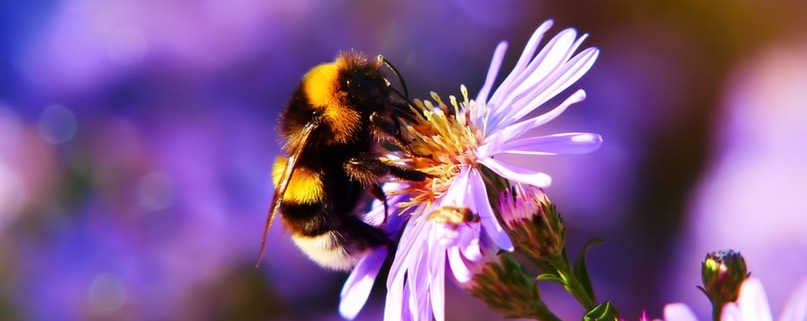Pests or Not? Which Bugs are Actually Good for Your Garden
In this article, we’re exploring a variety of different bugs and looking into which might actually be a positive thing to have in your garden. It is easy to assume that insects and bugs can be a bad thing, we spend our time trying to get rid of them when they infest our homes, but actually, some of them (in moderate numbers) can be good for your garden.
There are over a million different types of insects in the world and some of them will be pretty useless or even have a negative impact on your yard, but we’ve listed some of the best and explained why they can be so helpful here.
How bugs can be beneficial?
There are three types of ways bugs can help, and categories in which we can put these insects: pollinators, de-composers or predators.
Pollinators are able to spread pollen and help the reproduction of crops and flowers. There has been a lot made of how important bees are to humanity in recent years, and these are an example of a pollinator. We rely on these and they can help your garden stay healthy.
Decomposers are another category. These help by feeding on pretty much anything they find! Things like dead plants and anything which is rotting. They aren’t fussy about what they consume and this makes them perfect for getting rid of old unwanted waste in the garden. and spiders are examples of these types of bugs.
The other category is the predator insect. These include ladybugs and lacewings, they are insects which can consume and kill the bugs which we don’t need and want in our garden. Those which kill our crops and plants are not wanted. In turn, these can feed birds and hedgehogs and help to build the ecosystem which we need in order for our backyard to function properly.
Which bugs are good to have in your garden/house and why?
Ladybugs
Ladybugs are good to have around as they can eat aphids and even the eggs of pests, they also eat nymphs of whiteflies before they develop. You can encourage ladybugs by planting marigolds and cabbages.
Damselflies and Dragonflies
Dragonflies and damselflies are really important when it comes to ensuring the mosquito population doesn’t rise and they feed on the larvae of many pests when they are in their developed stage. Often, they will only be found near water.
Mantis
Some people think that the Mantis is endangered, but this is a myth. They’re going strong and can nest in your backyard. They do eat bees, but also aphids and other creatures which may be out to feast on your plants and crops.
Syrphid Fly
These are easy to confuse with bees and wasps. They actually eat a lot of aphids and the mothers even lay eggs among the colonies to ensure that their young constantly have food.
Green Lacewing
Lacewings don’t look like they could do much harm, but they absolutely can when it comes to feasting on garden pests to benefit such as mites and aphids. Planting Coriander and Fennell can help to attract these into your garden to patrol the unwanted mites.
Parasitic Wasp
Parasitic Wasp is one of the strangest looking bugs on our list and also one which has a lot of benefit to the garden. They don’t tend to sting humans and are known for parasitizing a lot of different pests including grubs, caterpillars and earworms. Their unique appearance means you may not recognize one if you see it.
Assassin Bug
Intimidating by name, and sometimes even intimidating by nature. Don’t worry, they won’t hurt humans unless they are backed into a proverbial corner, but they can certainly rule the roost in your backyard.
They feast on a huge amount of the pests to benefit that can pose a threat to your plants in the garden, and for this reason, they are one of the most helpful creatures to have inhabit your backyard. Because of this, they are even one of the few types of bugs you can buy from a garden center in order to aid your pest control and avoid having to use other pest controls.




